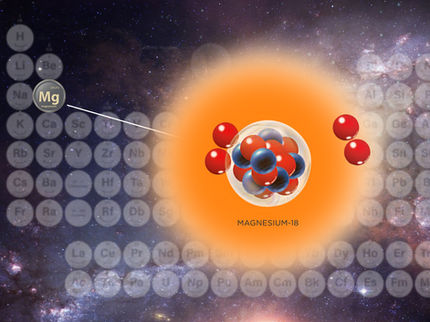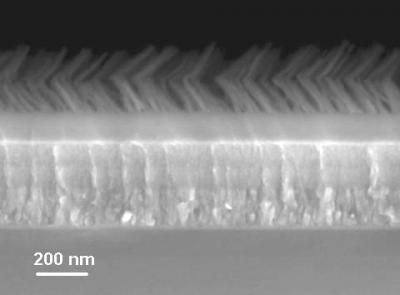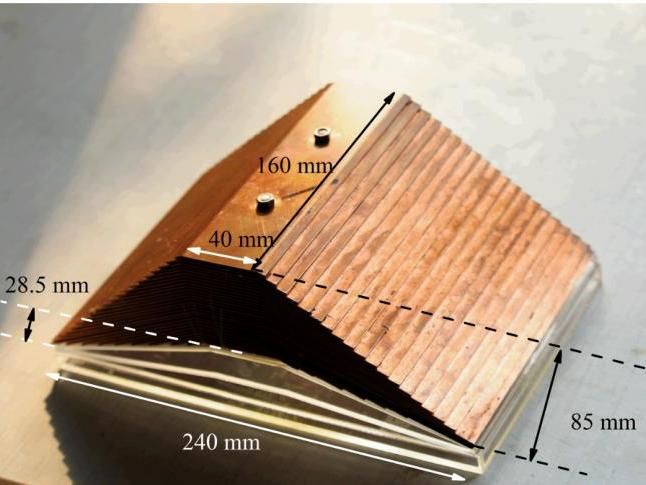Researcher nabs 'doubly magic' tin isotope
Michigan State University scientists make first-of-its-kind measurements of rare nuclei
With help from newly developed equipment designed and built at Michigan State University, MSU researchers have been able to make first-of-its-kind measurements of several rare nuclei, one of which has been termed a "holy grail" of experimental nuclear physics.
The discoveries, made at MSU's National Superconducting Cyclotron Laboratory using an isotope purification device, will help to refine theoretical models about how elements are created in the cosmos. Until now, this was beyond the technical reach of nearly all of the world's nuclear science facilities. To be published in Physical Review Letters , the paper details how the researchers were able to measure the nuclei of tin, cadmium and indium.
"Tin-100, in particular, has been sort of a holy grail of experimental nuclear physics," said NSCL senior physicist Daniel Bazin of one of the isotopes, with 50 protons and 50 neutrons, described in the paper.
Within nuclear science, 50 is considered "magic" because it's one of a handful of numbers associated with extra stability. The other magic numbers are 2, 8, 20, 28, 82 and 126.
It takes a magic number of protons or neutrons to fill the nested energetic shells that form the nucleus like stacking Russian matryoshka dolls. To understand the concept, consider that each carved doll similarly has a magic number of marbles that precisely and completely fills the hollow interior. And just as a doll full of marbles neatly packed together is probably sturdier than one that's only half or a quarter full, so too is a closed-shell nucleus more stable than its counterparts.
Tin-100 is one of the few "doubly magic" nuclei with magic numbers of both protons and neutrons. Such nuclei are generally far more stable than other particles, especially at the fleeting, shape-shifting edge of nuclear existence. Because of this stability, doubly magic nuclei serve as useful semi-permanent signposts to rare isotope researchers who troll the unexplored terrain of the nuclear landscape seeking to answer basic questions about the structure of nuclear matter and processes that create chemical elements inside stars.
The new experimental device, the radio frequency fragment separator, provides at least a hundredfold boost to NSCL's ability to filter out the few exotic isotopes from the vast sea of other particles produced by its coupled superconducting cyclotrons and downstream magnets. Funding for the equipment was provided by the National Science Foundation.
This newfound filtering ability resulted in the first production and measurement in North America of tin-100, which has been eagerly pursued by experimentalists since at least the mid-1990s. GSI in Germany and GANIL in France are the only other nuclear science facilities in the world to have successfully produced and studied the rare, proton-rich isotope of tin, an element extensively used for thousands of years in everything from ancient spears and knives to cars and modern electronics.
In their paper, a draft version of which is available online on the arxiv.org preprint server, Bazin and his collaborators also report the measurement of half-lives of the cadmium-96 (48 protons and 48 neutrons) and indium-98 (49 protons and 49 neutrons) isotopes.
The announcement of the observation of the three rare isotopes builds on recent NSCL success in creating nuclear matter that otherwise only exists in extreme environments in space, such as exploding stars. In fall 2007, the laboratory reported the discovery of three neutron-rich isotopes of magnesium and aluminum in the journal Nature, a finding that received considerable media attention in the science and mainstream press.
The laboratory is currently undertaking a major MSU-funded upgrade, the centerpiece of which is a new low-energy reaccelerator that will be used to conduct astrophysical research. When this upgrade is completed in summer 2010, NSCL will be only facility in the world capable of offering experimentalists the chance to conduct research with fast, stopped and reaccelerated beams of rare isotopes.
Other news from the department science

Get the chemical industry in your inbox
By submitting this form you agree that LUMITOS AG will send you the newsletter(s) selected above by email. Your data will not be passed on to third parties. Your data will be stored and processed in accordance with our data protection regulations. LUMITOS may contact you by email for the purpose of advertising or market and opinion surveys. You can revoke your consent at any time without giving reasons to LUMITOS AG, Ernst-Augustin-Str. 2, 12489 Berlin, Germany or by e-mail at revoke@lumitos.com with effect for the future. In addition, each email contains a link to unsubscribe from the corresponding newsletter.





























































